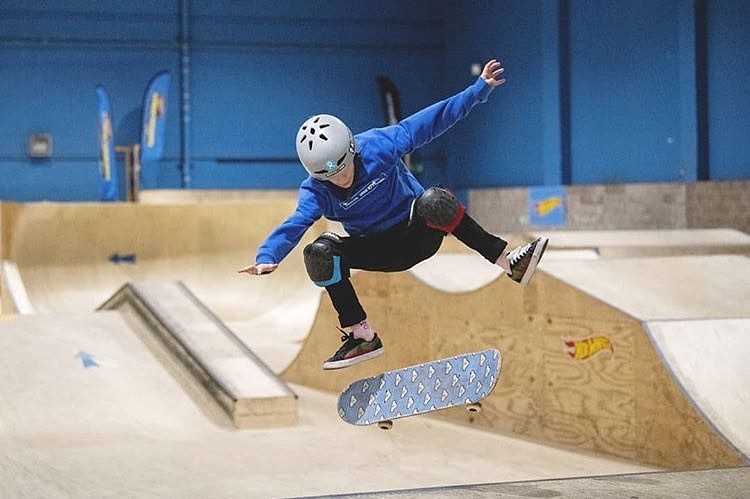
Street skateboarding is more than just a sport – it’s a way of life. From the bustling streets of cities to the empty ramps of abandoned warehouses, skateboarders have taken their passion for riding to the next level. With a combination of creativity, skill, and fearlessness, these athletes push the boundaries of what is possible on four wheels.
What sets street skateboarding apart is its focus on urban environments, using obstacles like rails, stairs, and ledges to perform jaw-dropping tricks. Whether it’s a kickflip down a set of stairs or a 50-50 grind on a handrail, street skateboarding demands precision and style. Every move is a testament to the daring nature of the skater, as they conquer their surroundings with finesse and grace.
But street skateboarding is not just about tricks – it’s about pushing the limits of what the human body can do. Skaters constantly strive for progression, looking for new ways to challenge themselves and redefine what is possible on a skateboard. It’s a constant battle of will and determination, as skaters face the fear of injury and failure head-on, only to come back stronger and more determined than ever.
For those who dare to enter the world of street skateboarding, the rewards are endless. It’s a thrilling journey of self-discovery, where skaters learn to overcome obstacles both on and off the board. They become part of a tight-knit community that shares their love for the sport and supports each other’s progress. Street skateboarding is a lifestyle that embraces freedom, creativity, and individuality like no other.
So, if you’re ready to take on the world of street skateboarding, strap on your helmet, lace up your sneakers, and prepare to be amazed. This is a world where gravity is defied, dreams become reality, and the unimaginable becomes possible. Welcome to the electrifying world of street skateboarding!
The kickflip is one of the most essential tricks in street skateboarding. It involves flipping the skateboard with your foot while jumping into the air. Mastering this trick is a milestone for any skateboarder looking to progress in their skills and style.
To perform a kickflip, start by finding your comfortable stance on the skateboard. Place your front foot at a slight angle diagonally across the board, with the ball of your foot near the edge. Your back foot should be positioned on the tail of the skateboard.
Next, crouch down slightly and prepare to pop the skateboard off the ground with your back foot. As you pop the tail down, slide your front foot upwards and simultaneously flick the edge of the skateboard with your toes. This flick will create the rotation of the board.
As the skateboard starts to rotate, use your toes to level it out, making sure it is flipping evenly. At this point, your back foot should be ready to catch the board when it completes the rotation.
While the board is in the air, keep your eyes on it and prepare to catch it with your back foot. As the grip tape on the board comes back around, stomp your foot down to stop the rotation and land smoothly.
Once you have the kickflip down, you can start experimenting with different variations and combinations. Add a kickflip into your lines and combos, and incorporate it into other tricks. The kickflip is a foundational trick that will open up a world of possibilities in your street skateboarding journey.
Ollie: The Foundation of Skateboarding
What is an Ollie?
An Ollie is a skateboarding trick that allows the skater to leap into the air without the use of their hands. It was invented by Alan “Ollie” Gelfand in the late 1970s and quickly became one of the most popular and essential tricks in skateboarding.
To perform an Ollie, the skater needs to use a combination of techniques:
| Technique | Description |
|---|---|
| Pop | The skater needs to apply a downward force on the tail of the skateboard to make it pivot against the ground. |
| Slide | While popping, the skater slides their front foot from the middle to the front of the skateboard, dragging it up towards the nose. |
| Jump | Simultaneously as the slide, the skater jumps off their back foot, while keeping their front foot slightly elevated. |
| Level Out | At the peak of the jump, the skater needs to level out the board by leveling their feet and straightening their body. |
| Landing | Finally, the skater lands back onto the skateboard, absorbing the impact with their knees. |
Mastering the Ollie requires practice and determination. It’s the first trick most skateboarders learn and is the stepping stone to more complex maneuvers such as kickflips, 180s, and even big gaps.
Importance of Ollie
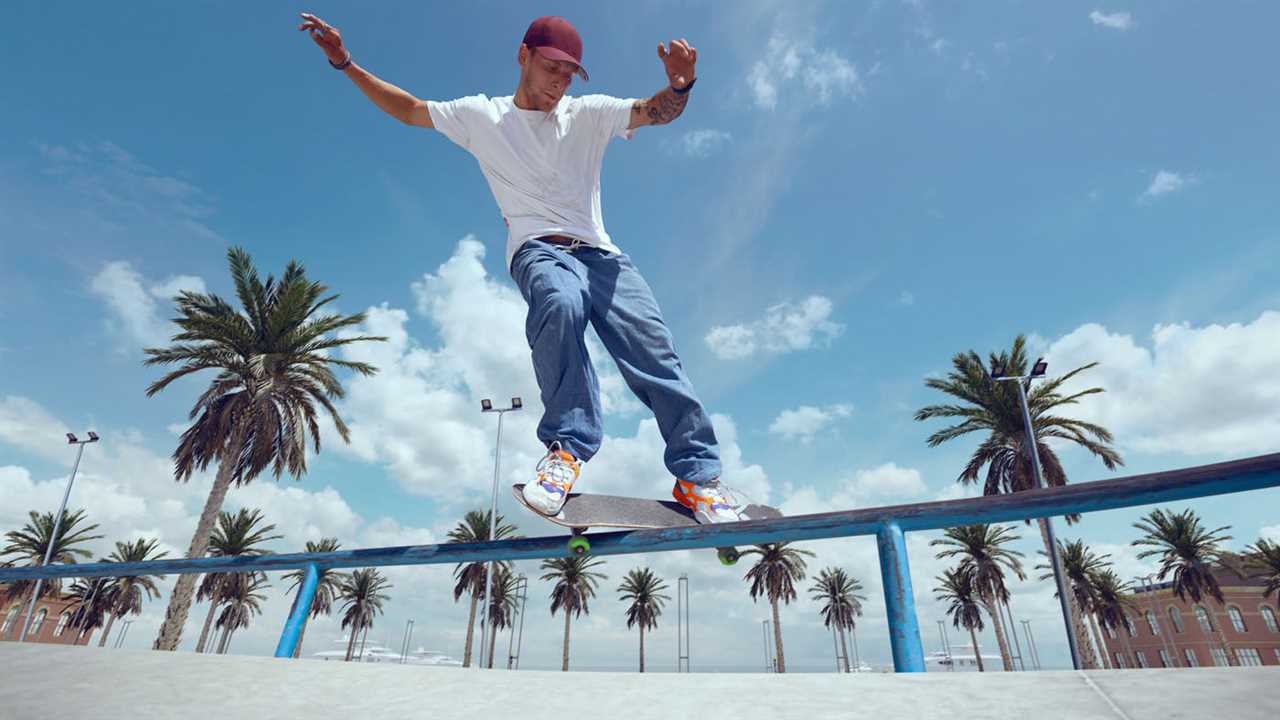
The Ollie is not only a trick but also a key skill that enables skateboarders to navigate various obstacles. It allows them to jump onto curbs, ledges, and ramps, opening up endless possibilities for creative expression.
Furthermore, the Ollie is often incorporated into combination tricks and lines, where skateboarders string together multiple tricks seamlessly. Without a solid foundation in the Ollie, these more advanced maneuvers would be impossible.
Slides and Grinds: Conquering Rails and Edges
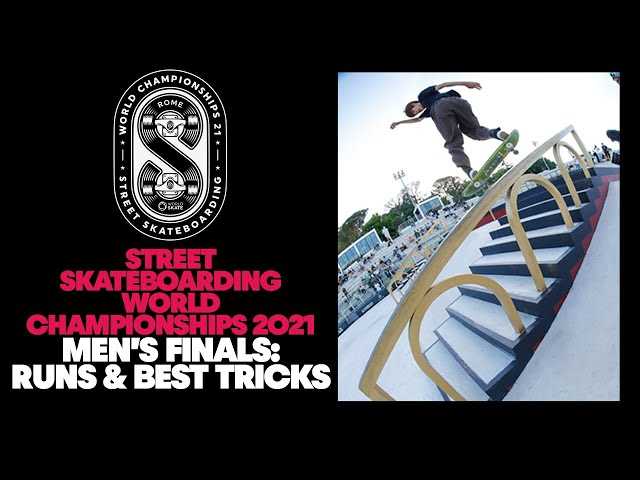
When it comes to street skateboarding, one of the most thrilling aspects is conquering rails and edges with slides and grinds. These tricks require precise balance, timing, and technique, but once you master them, they can take your skateboarding to a whole new level of excitement.
Types of Slides and Grinds
There are various types of slides and grinds that you can explore as a skater. Some popular ones include:
- Boardslide: Sliding along a rail or ledge with the underside of your skateboard
- Lipslide: Similar to a boardslide, but sliding with the edge of the skateboard
- 50-50 grind: Grind on both trucks of your skateboard
- Crooked grind: Grind with your front truck while the back truck is angled
- Feeble grind: Grind with your back truck while the front truck is angled
Techniques and Tips
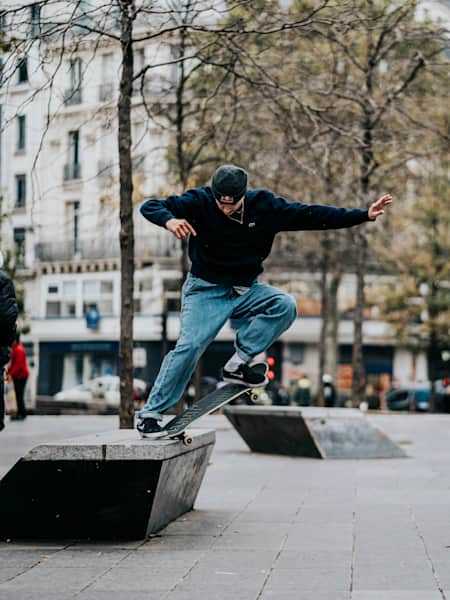
Mastering slides and grinds requires practice and patience. Here are a few techniques and tips to help you get started:
- Foot Placement: For slides, position your feet with your back foot slightly angled and your front foot near the front bolts of the skateboard. For grinds, place your feet near the edges of the skateboard with your back foot slightly angled.
- Approach: Approach the rail or ledge with enough speed and pop your skateboard to ollie onto it. The timing and angle of your pop are crucial for a successful slide or grind.
- Balance: Maintain a proper balance while sliding or grinding by keeping your weight centered over your skateboard. Use small movements and adjustments to control your board.
- Controlled Landings: As you approach the end of the rail or ledge, prepare for a controlled landing by shifting your weight back over your skateboard. Bend your knees to absorb the impact.
Remember, slides and grinds can be challenging, so start with smaller rails or ledges and gradually work your way up to more difficult obstacles. Always wear protective gear and skate within your skill level. With practice and determination, you’ll soon be conquering rails and edges with style and confidence!
Flip Tricks: Adding Style and Complexity
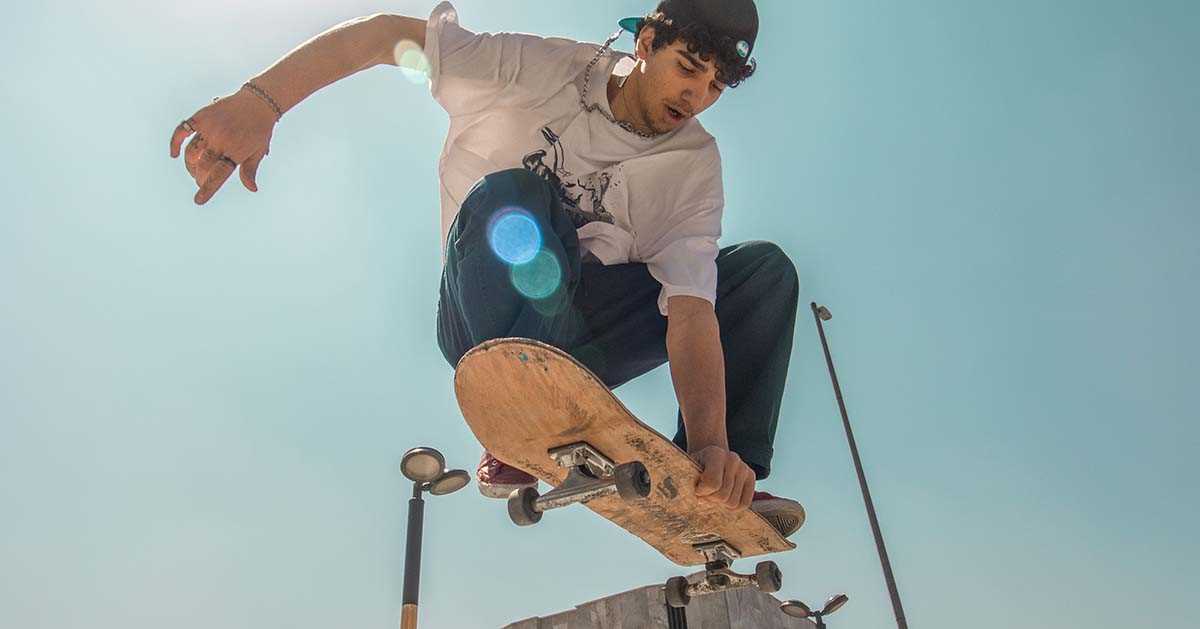
Flip tricks are a key part of any street skater’s repertoire, adding both style and complexity to their tricks. These tricks involve using the skateboard’s pop and flick to rotate the board in various ways while airborne. Flip tricks can range from simple spins to intricate flips and rotations, all performed with a combination of skill, balance, and timing.
Types of Flip Tricks
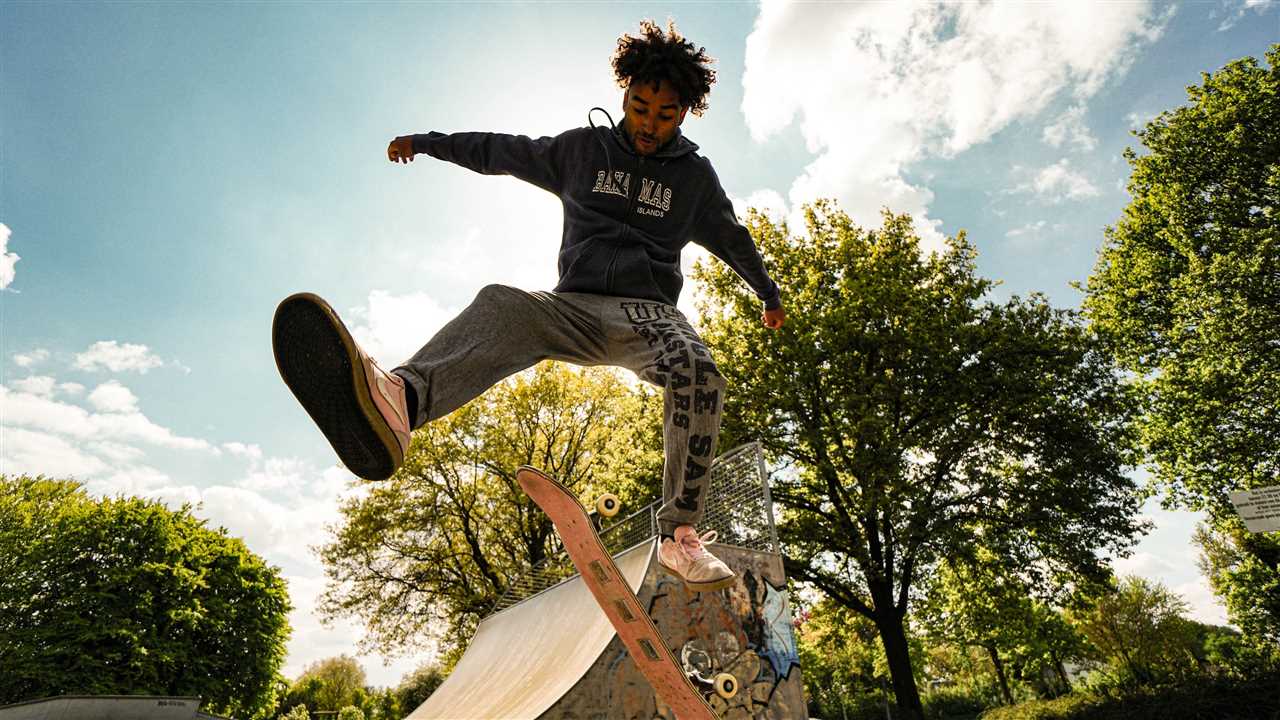
There are numerous types of flip tricks that skaters can learn and master. Some of the most popular ones include:
- Ollie: The ollie is the foundation for many flip tricks. It involves popping the tail of the skateboard and sliding the front foot forward to level out the board in mid-air.
- Kickflip: The kickflip is a classic trick where the skater kicks the edge of the skateboard with their front foot, causing it to flip sideways and rotate before landing back on the grip tape.
- Heelflip: Similar to the kickflip, the heelflip involves kicking the skateboard with the heel side of the front foot, resulting in the board rotating in the opposite direction.
- Varial Flip: The varial flip combines a pop shuvit and a kickflip. The skater pops the tail of the skateboard and kicks the edge of the board with their front foot, causing it to flip and rotate.
Mastering Flip Tricks
Mastering flip tricks takes time, practice, and dedication. Skaters should start by learning the basic ollie and then progress to more complex flip tricks. Here are some tips to help skaters improve their flip trick skills:
- Focus on foot placement: Pay attention to where your feet are placed on the skateboard. The position of your front foot and how you apply pressure can greatly affect the outcome of the trick.
- Practice flicking: The flick is the motion of sliding your front foot off the edge of the skateboard. Practice flicking your foot in a controlled manner to get a consistent and powerful flip.
- Commitment is key: Don’t be afraid to fully commit to the trick. Trust your instincts and go for it with confidence. The more you commit, the more likely you are to land the trick.
- Start small and progress: Begin by attempting flip tricks on flat ground or small obstacles. As you gain confidence and control, gradually move on to bigger and more challenging obstacles.
Remember, mastering flip tricks takes time and patience. Keep practicing and pushing yourself, and soon you’ll be adding your own style and complexity to your street skate repertoire.
Ramps and Transition: Mastering Airborne Tricks
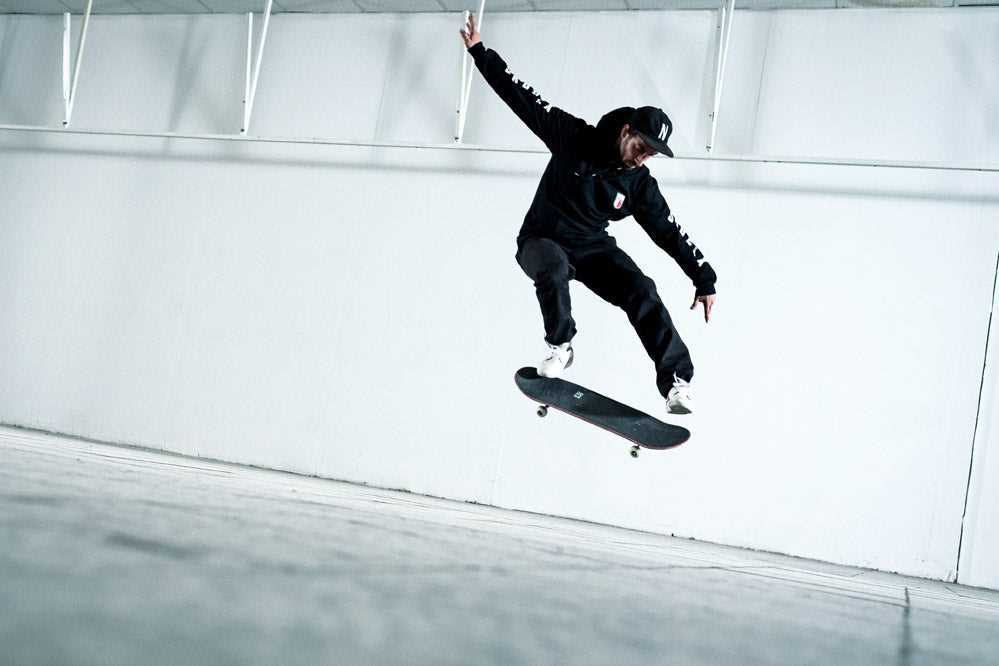
One of the most thrilling aspects of street skateboarding is performing tricks in mid-air. Whether it’s launching off a ramp or transitioning from one surface to another, mastering airborne tricks can take your skating to a whole new level. In this section, we will explore tips and techniques for ramp skating and transitioning, helping you become an aerial master.
Ramps are essential for launching yourself into the air and executing tricks that are impossible on flat ground. When it comes to ramp skateboarding, mastering speed and control is crucial. Approaching the ramp with enough speed will ensure that you have enough airtime to perform your trick. Finding the right balance between speed and control is key to landing your tricks smoothly.
Before attempting any ramp tricks, it’s important to familiarize yourself with various types of ramps. From mini ramps to vert ramps, each offers unique challenges and opportunities. Mini ramps are ideal for beginners as they provide a smaller transition and less steep incline. Vert ramps, on the other hand, are best suited for experienced skaters looking to go bigger and higher. Understanding the different ramps and their specific features will help you choose the appropriate one for your skill level.
Transitioning from one surface to another is another essential skill for mastering airborne tricks. Whether it’s a transition from a bank to a rail or a quarterpipe to a ledge, smooth transitions are key to landing your tricks. To ensure a seamless transition, focus on your body positioning and use your arms and legs to generate momentum. Practice transitioning on different surfaces to become comfortable with the movement and build muscle memory.
When it comes to performing tricks in mid-air, confidence is key. The more you practice and become familiar with ramps and transitioning, the more confident you will become in executing tricks. Start with basic tricks, such as ollies or kickflips, and gradually progress to more advanced tricks like 360 flips or aerial grabs. Remember to always wear protective gear and skate within your skill level to avoid injuries.
As you continue to refine your ramp skating and transitioning skills, you will unlock a thrilling world of tricks and maneuvers. Push your limits and challenge yourself to go higher, faster, and bigger. With dedication and practice, you can become a master of airborne tricks and push the boundaries of street skateboarding.
Skateboarding Styles: from Freestyle to Street
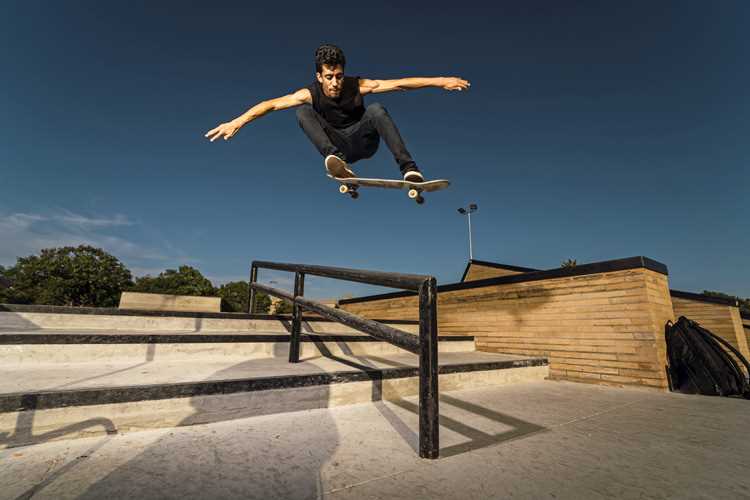
Skateboarding has evolved over the years, giving rise to various styles and disciplines. From the smooth and fluid movements of freestyle skateboarding to the adrenaline-rushing tricks of street skateboarding, there is a style for every skateboarder out there.
Freestyle Skateboarding
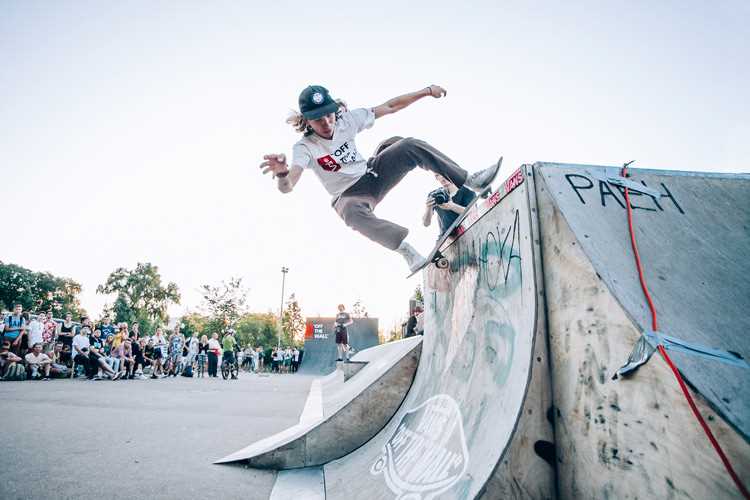
Freestyle skateboarding focuses on creativity and expression, combining elements of dancing, gymnastics, and flatland tricks. Skaters showcase their skills through fluid movements, intricate footwork, and stylish tricks. The goal is to blend technical tricks with a smooth and artistic flow, often incorporating flips, spins, grabs, and slides.
With freestyle skateboarding, the skatepark becomes a canvas, and skaters use their boards as paintbrushes. It is all about pushing the boundaries of what is possible and turning the urban landscape into a playground of endless possibilities.
Street Skateboarding
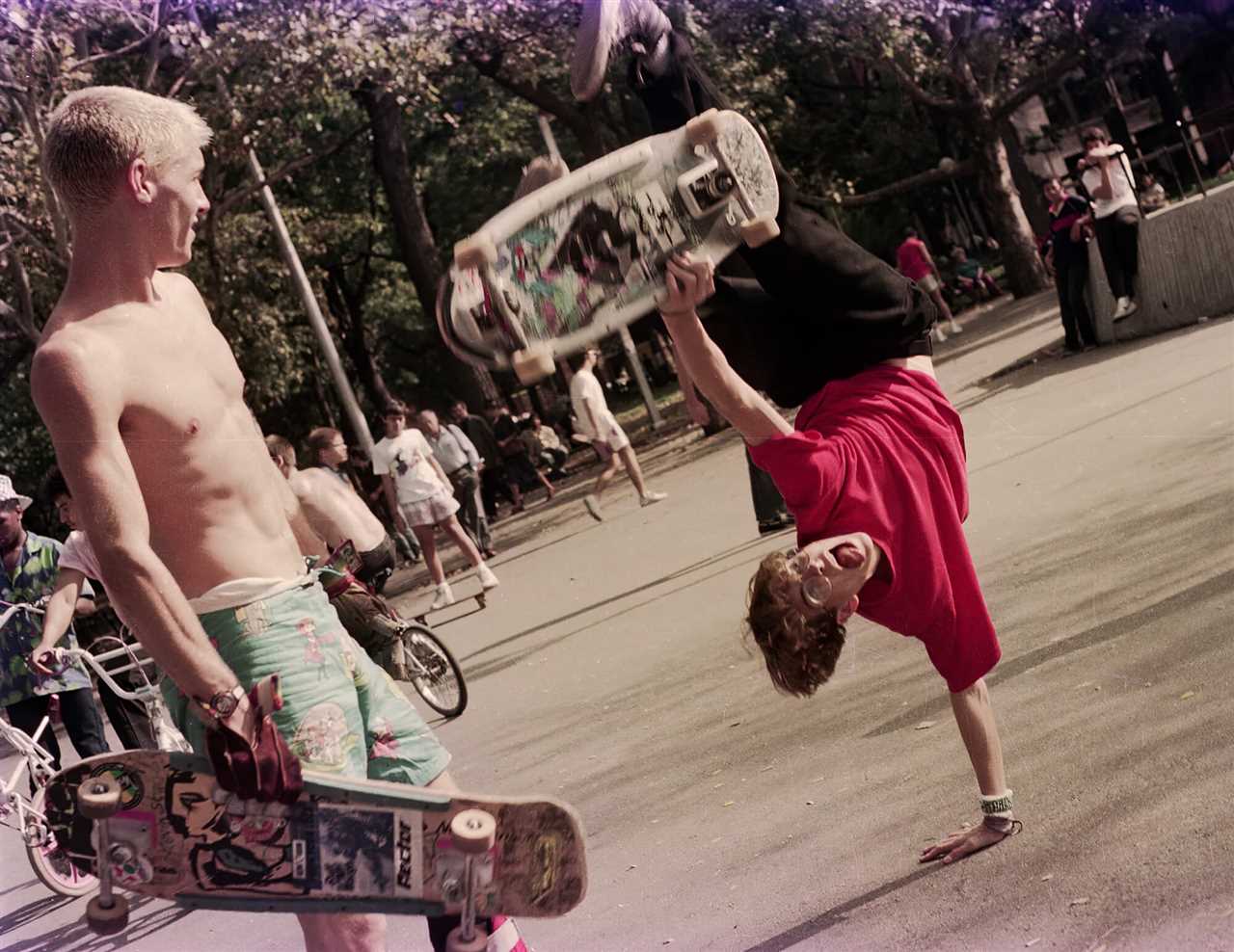
Street skateboarding is the most popular style and can be seen in skateparks, plazas, and urban environments worldwide. The essence of street skateboarding lies in its raw and gritty nature, where skaters navigate through the city streets, using whatever obstacles they come across as opportunities for tricks and stunts.
Street skaters typically perform tricks on ledges, stairs, handrails, gaps, and other urban features. They incorporate grinds, flips, slides, and manual tricks into their repertoire, often seeking out new spots and challenges to push their skills to the limit.
What sets street skateboarding apart is its urban aesthetic and the ability to turn everyday objects into skateboarding playgrounds. It is a style that requires creativity and adaptability, as skaters constantly look for new ways to conquer their environment.
Whether you prefer the grace of freestyle skateboarding or the raw energy of street skateboarding, both styles offer unique and thrilling experiences. So grab your board, find your style, and hit the streets for an unforgettable skateboarding adventure!
Skateboard Modifications: Tailoring Your Ride
Skateboarding is all about personal style and expression. One way to make your skateboard truly yours is by making modifications that enhance your ride. From choosing the right trucks to customizing your grip tape, there are countless ways to tailor your skateboard to suit your preferences and style.
One of the most common modifications skaters make is changing their trucks. Trucks are the metal T-shaped components that attach the wheels to the deck. By adjusting the tightness of the trucks or replacing them with ones of different sizes, you can change how your skateboard turns and performs tricks. Tighter trucks provide stability and are great for skating ramps, while looser trucks allow for quick and responsive turns, ideal for street skateboarding.
Another popular modification is changing the wheels. Skateboard wheels come in various sizes, hardness levels, and shapes. Softer wheels are better for cruising and provide a smoother ride over rough surfaces, while harder wheels offer more control for tricks and slides. The size and shape of the wheels also affect performance, with larger wheels providing more speed and smaller wheels ensuring better maneuverability.
Besides trucks and wheels, many skaters choose to customize their grip tape. Grip tape is the gritty surface on top of the skateboard deck that provides traction for your feet. You can cut, color, and design your grip tape to create a unique look for your skateboard. Some skaters even use stickers or stencils to add logos or artwork to their grip tape.
| Modification | Description |
|---|---|
| Trucks | Adjust tightness or replace for different turning and performance capabilities |
| Wheels | Choose size, hardness, and shape for desired ride and trick performance |
| Grip Tape | Customize with cutting, coloring, or design for a personalized look |
These are just a few examples of how you can modify your skateboard to tailor it to your liking. Whether you want to improve performance, showcase your style, or simply have fun experimenting with different setups, skateboard modifications offer endless possibilities to make your ride truly unique.
Manual: Achieving Balance and Control
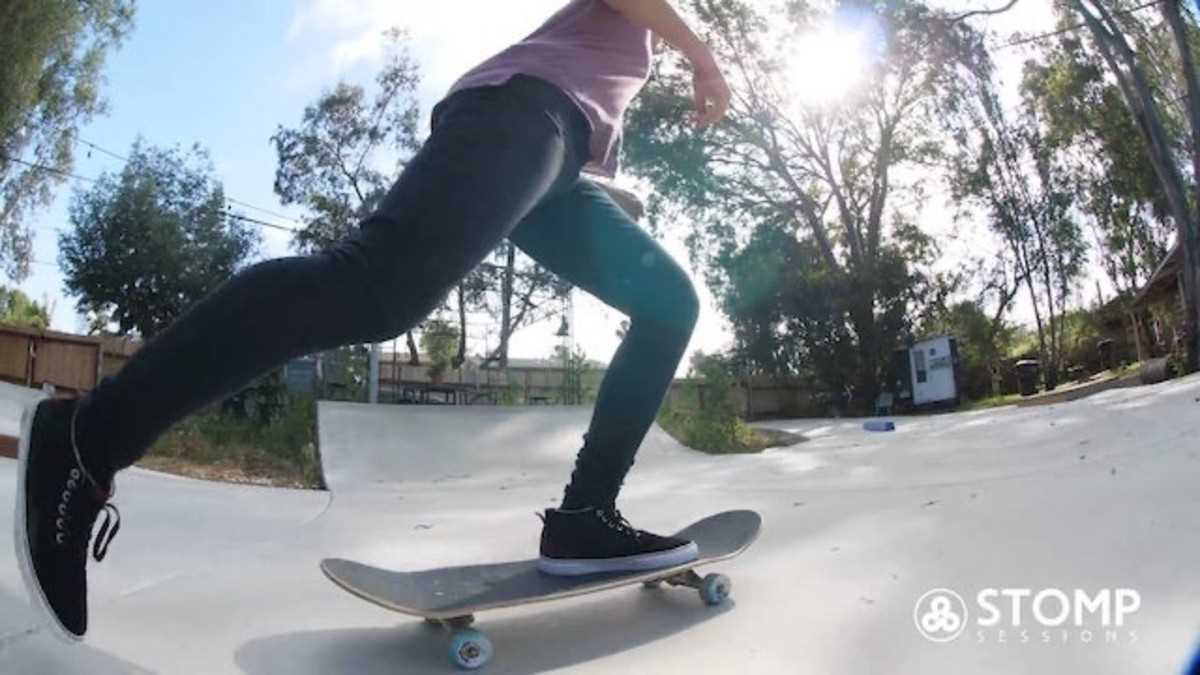
When it comes to street skateboarding, one of the most impressive tricks to master is the manual. This trick involves balancing on only two wheels of the skateboard while moving forward. Achieving balance and control during a manual requires practice and concentration.
Body Position
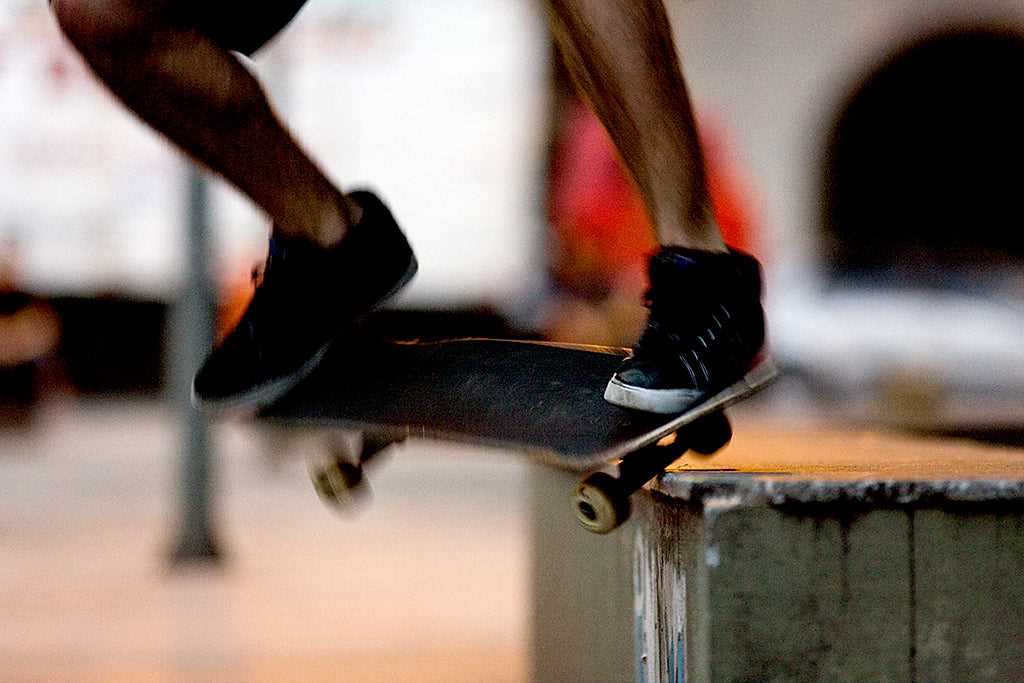
The key to maintaining balance during a manual is proper body position. When attempting a manual, keep your weight centered over the skateboard. Bend your knees slightly and keep your arms relaxed. Make sure to shift your weight forward or backward to control the balance of the manual.
Foot Placement
Foot placement is crucial for achieving balance and control during a manual. Place your front foot on the skateboard near the bolts, just behind the front truck. Your front foot should be parallel to the skateboard and slightly slanted diagonally. Your back foot should be near the tail of the skateboard, with your toes hanging off the edge slightly. This foot placement will help you maintain stability and control during the manual.
Once you have achieved the proper body position and foot placement, it’s time to attempt the manual. Start by pushing off with your back foot, gaining some speed. As you gain momentum, lift the front wheels off the ground by leaning back slightly and shifting your weight towards your back foot. Keep your eyes focused on a fixed point ahead to help maintain balance.
As you continue to practice your manuals, remember to start slow and gradually increase your speed and distance. This will help you build your balance and control over time. Don’t be discouraged if you fall or lose balance in the beginning – it’s a natural part of the learning process. With dedication and practice, you’ll soon be able to achieve long and controlled manuals that will impress any street skateboarding enthusiast.
Remember to always wear appropriate safety gear while practicing skateboarding tricks, including helmets and knee pads. Safety should be your top priority to ensure a thrilling and safe street skateboarding experience.
The Impact of Street Skateboarding: Culture and Community
Street skateboarding has had a significant impact on both culture and community, shaping the way people view and interact with the urban landscape. This alternative sport, born from the streets, has revolutionized the way people perceive public spaces and has developed its own distinct culture and community.
Breaking Boundaries and Redefining Urban Spaces
Street skateboarding is more than just a sport; it is a way of reclaiming and repurposing public spaces. Skateboarders see the world through a different lens – they look beyond the typical function of objects and architecture and instead see potential and creativity. Staircases, handrails, ledges, and even empty pools all become opportunities for skateboarders to express themselves and push the limits of what is possible.
This unique perspective challenges traditional notions of how urban spaces should be used and encourages others to think unconventionally. The result is a more dynamic and inclusive cityscape that invites people to interact in new and unexpected ways.
A Thriving Culture and Community
Street skateboarding has fostered a vibrant and tight-knit community that transcends age, background, and societal norms. Skateparks and urban spots have become gathering places for skateboarders of all skill levels, providing a sense of belonging and camaraderie.
This inclusive culture celebrates individuality and encourages self-expression. Skaters share a language and understand the dedication required to master tricks and techniques, creating a sense of unity and mutual respect. Through competitions, events, and local skate shops, the community continues to grow and thrive.
Furthermore, street skateboarding has influenced other areas of culture, from fashion and music to art and film. Skateboarding slang, styles, and aesthetics have become ingrained in popular culture, shaping trends and influencing the creative landscape.

I am a mural enthusiast and a fervent admirer of street art. Rather than creating murals myself, I am passionate about collecting them. My love for street art knows no bounds. I am dedicated to curating and cherishing these artworks that grace the streets. My collection stands as a testament to my profound appreciation for this form of artistic expression.
read about me



